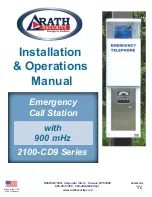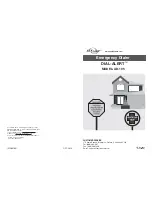
Section 3: Features
66
Product Description
●
Paging
Internal and External Paging may be available to DISA callers. This allows co-workers in
adjacent facilities, for example, to broadcast announcements to each other.
●
Direct Trunk Access
DISA callers may be able to select a specific trunk for outgoing calls through the system. To
directly access a trunk, the user dials Service Code #9 followed by the trunk’s number (e.g.,
001). This allows the DISA caller to place an outgoing call over the selected trunk. Direct
Trunk Access bypasses the system’s Trunk Group Routing/ARS/Trunk Access Maps. As with
dial 9 access, any toll charges are incurred by the system. Also see Trunk Group Access above.
●
DISA/Tie Trunk Barge In
The DISA/Tie Trunk Barge In option allows a tie line caller to break into another extension’s
established call. This sets up a three-way conversation between the intruding party and the
two parties on the initial call.
DISA Toll Restriction
The digits a DISA caller dials for an outgoing call may be subject to the system’s Toll Restriction.
For example, Toll Restriction can prevent users from dialing a 1-900 service. When an incoming
DISA caller tries to use system trunks to dial 1-900, Toll Restriction will deny the call.
DISA Operating Modes
The DISA Operating Modes determine what happens when a DISA caller forgets to dial, calls a
busy or unanswered extension or dials incorrectly. The system can either drop the call or send it to
a preset Ring Group (called a the DISA Transfer Destination).
Department Calling with Overflow Message
If a DISA caller dials a busy Department Calling Group, the system can periodically play the voice
prompt, “Please hold on. All lines are busy. Your call will be answered when a line becomes free.”
while the caller waits. The interval between the voice prompts is the DISA Overflow Message
Time. When an extension in the Department Group becomes available, the call automatically goes
through. If the Department Calling Group remains busy past the DISA No Answer Time, the DISA
call routes to the overflow destination or disconnects. (What happens to the unanswered call is set
by the DISA Operating Mode). The Overflow Message requires a VRS.
Warning Tone for Long DISA Calls
You can set up the system to provide a warning tone to DISA callers that have been on a call too
long. The warning tone can be just a reminder (which the caller can ignore) or can be followed by a
forced disconnect of the call. When the DISA caller hears the warning tone, they have the option of
dialing a code to continue the conversation or disconnect.
















































